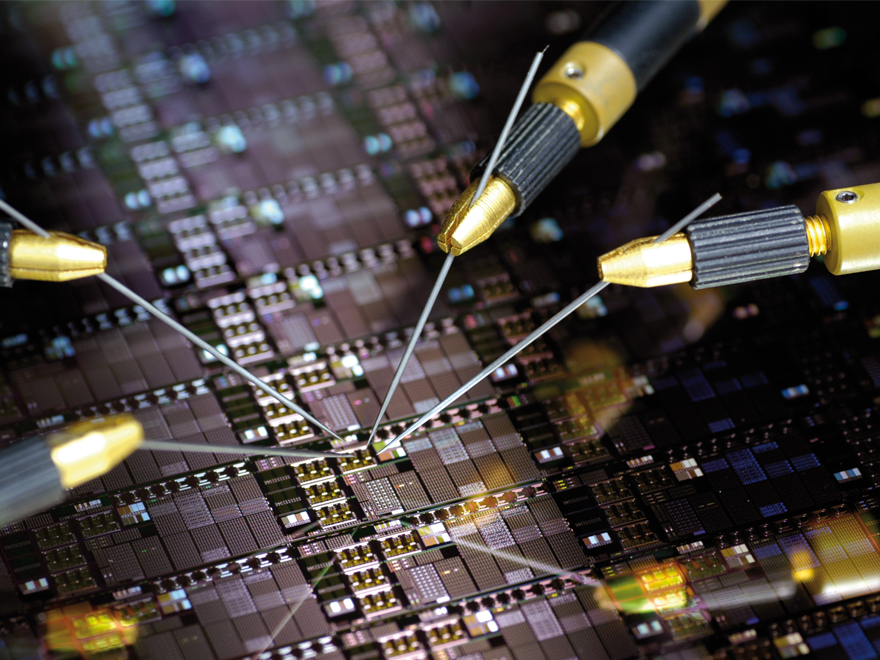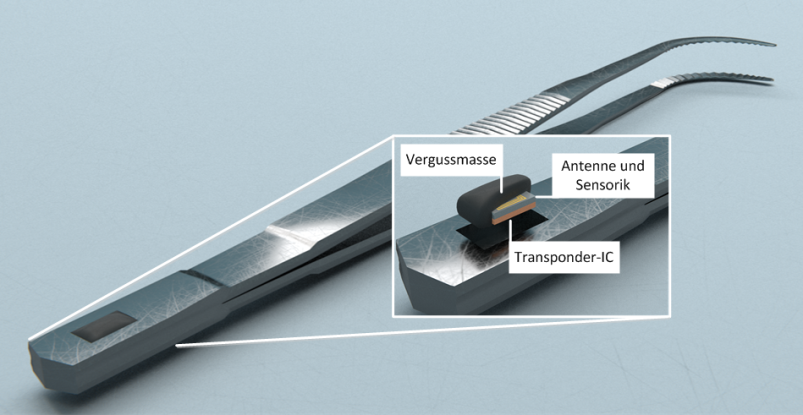UHF transponder in metal
According to a medical devices regulation of the EU (Regulation 2017/745 of April 5, 2017, EU-MDR) all medical products have to be clearly identifiable. Thus, machine readability is necessary. A regular label of the packaging is not sufficient; the product itself needs to be identifiable by an individual serial number. The background is the tracking of products in the sterile supply circle of a hospital. The tracking of, for example, surgical instruments is supposed to help decrease infection risks from failing to sterilize the instruments and reduce costs from unnecessary sterilization cycles.
As an approach Fraunhofer IMS focuses on the labeling with RFID systems in the UHF spectrum (5.6 Ghz). This approach has the advantage, compared to optical labelling practices (QR & barcode), that a UHF reader is able to capture all parts of a pile of randomly arranged instruments within a few milliseconds. With optical labelling practices employees have to roughly clean every instrument after using it and hold it in front of a reader to register it. One application case for pile reading is, for example, the reading process directly after the sterilization process in which every sterilized instrument is detected and their status is marked as “sterile” in a central database. The specific feature of this project is the mechanical nature which cannot be changed for the user, due to handling purposes and to not compromise the admission as a medical product. Therefore the transponder is not mounted onto the medical product (on-metal), but inside (in-metal).
For this, a cavity is milled into the instrument, the transponder (ASIC & antenna) is brought in and subsequently it is securely and evenly sealed. The difficulty: Metal shields from radio signals. To bypass this physical law, the instrument is used as an auxiliary antenna and the cavity is used as a resonator to lead wireless signals into the cavity to the transponder antenna. Through this idea the transponder inside the instrument can be operated despite a shielding metallic environment.
The transponder and the casting compound also have to be temperature-, pressure- and radiation-resistant to survive sterilization processes inside autoclaves or through gamma rays unscathed. Currently, Fraunhofer IMS develops the ASIC and the antenna for this application.

